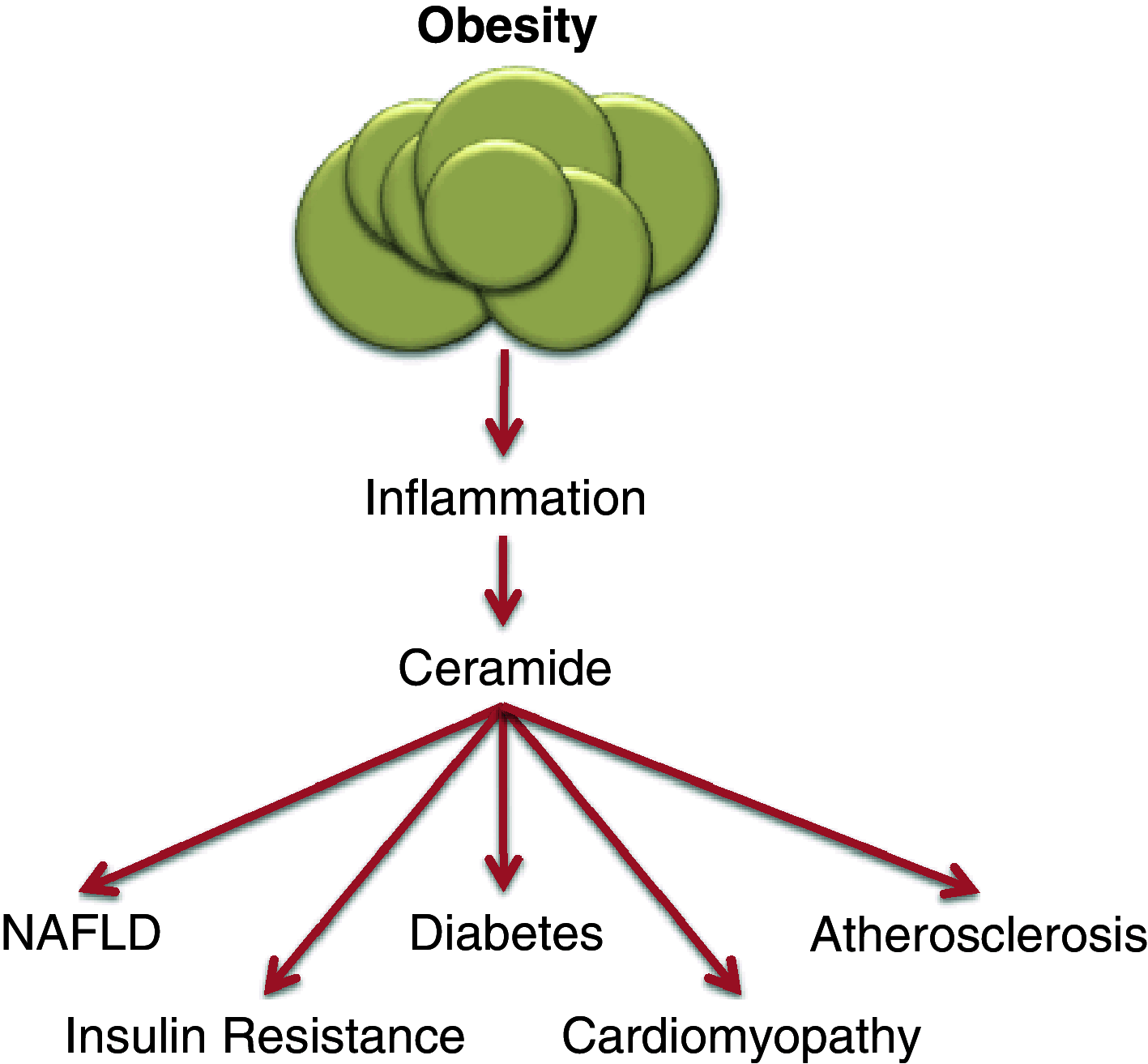A role for sphingolipids in the pathophysiology of obesity-induced inflammation
- PMID: 22294100
- PMCID: PMC11114706
- DOI: 10.1007/s00018-012-0917-5
A role for sphingolipids in the pathophysiology of obesity-induced inflammation
Abstract
Following the initial discovery that adipose tissue actively synthesizes and secretes cytokines, obesity-induced inflammation has been implicated in the etiology of a host of disease states related to obesity, including cardiovascular disease and type II diabetes. Interestingly, a growing body of evidence similarly implicates sphingolipids as prime instigators in these same diseases. From the recent discovery that obesity-related inflammatory pathways modulate sphingolipid metabolism comes a novel perspective—sphingolipids may act as the dominant mediators of deleterious events stemming from obesity-induced inflammation. This paradigm may identify sphingolipids as an effective target for future therapeutics aimed at ameliorating diseases associated with chronic inflammation.
Figures





References
-
- Finkelstein EA, Trogdon JG, Cohen JW, Dietz W. Annual medical spending attributable to obesity: payer-and service-specific estimates. Health Aff (Millwood) 2009;28:w822–w831. - PubMed
-
- Fontaine KR, Redden DT, Wang C, Westfall AO, Allison DB. Years of life lost due to obesity. JAMA. 2003;289:187–193. - PubMed
-
- Flegal KM, Graubard BI, Williamson DF, Gail MH. Cause-specific excess deaths associated with underweight, overweight, and obesity. JAMA. 2007;298:2028–2037. - PubMed
-
- Thevissen K, Francois IE, Winderickx J, Pannecouque C, Cammue BP. Ceramide involvement in apoptosis and apoptotic diseases. Mini Rev Med Chem. 2006;6:699–709. - PubMed
-
- Johns DG, Charpie JR, Webb RC. Is ceramide signaling a target for vascular therapeutic intervention? Curr Pharm Des. 1998;4:481–488. - PubMed
Publication types
MeSH terms
Substances
LinkOut - more resources
Full Text Sources
Medical

